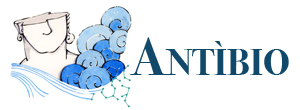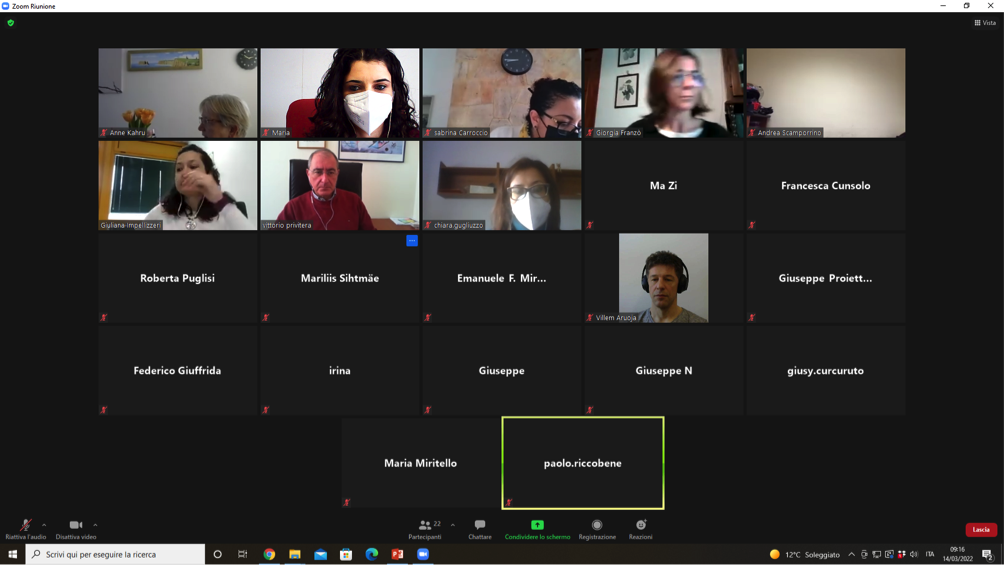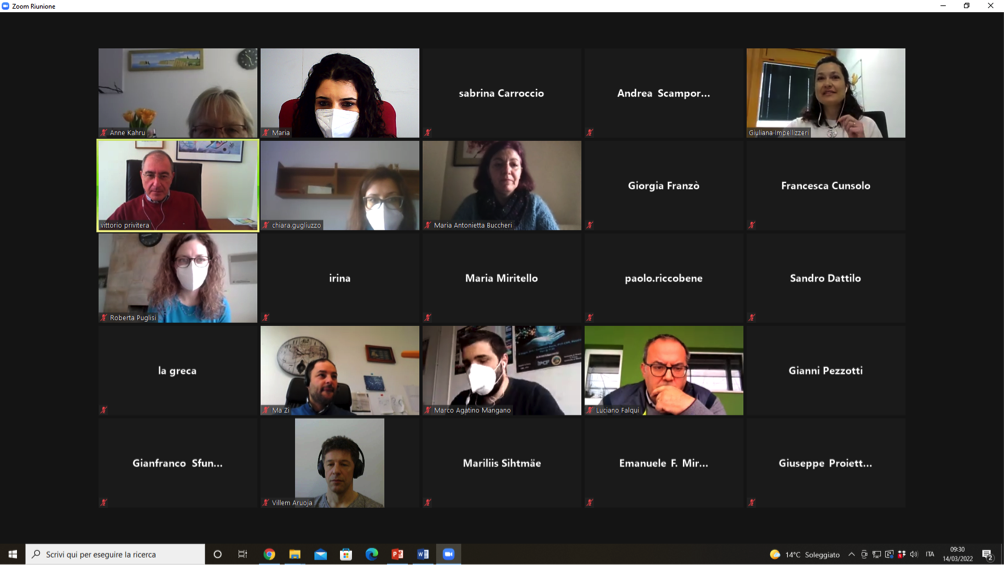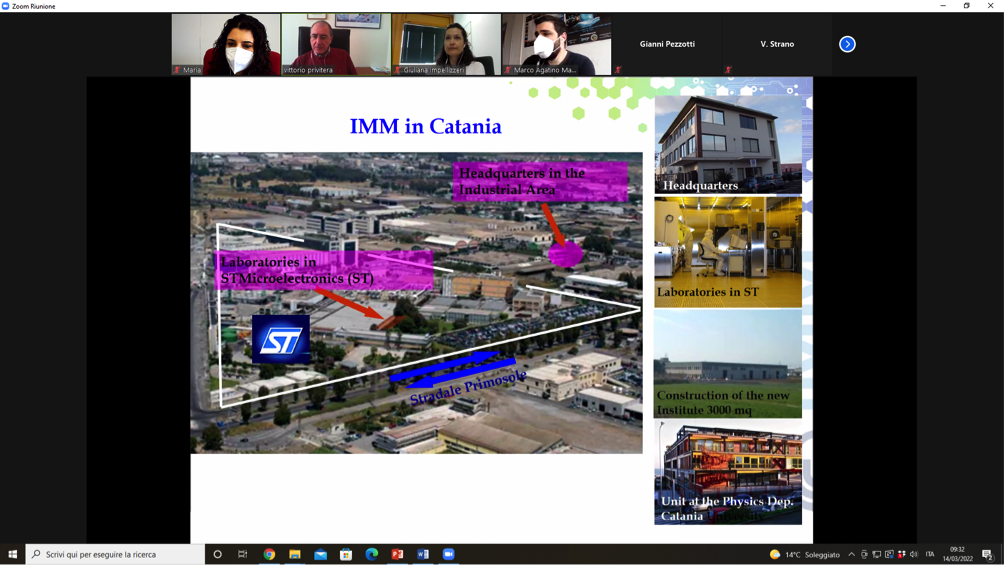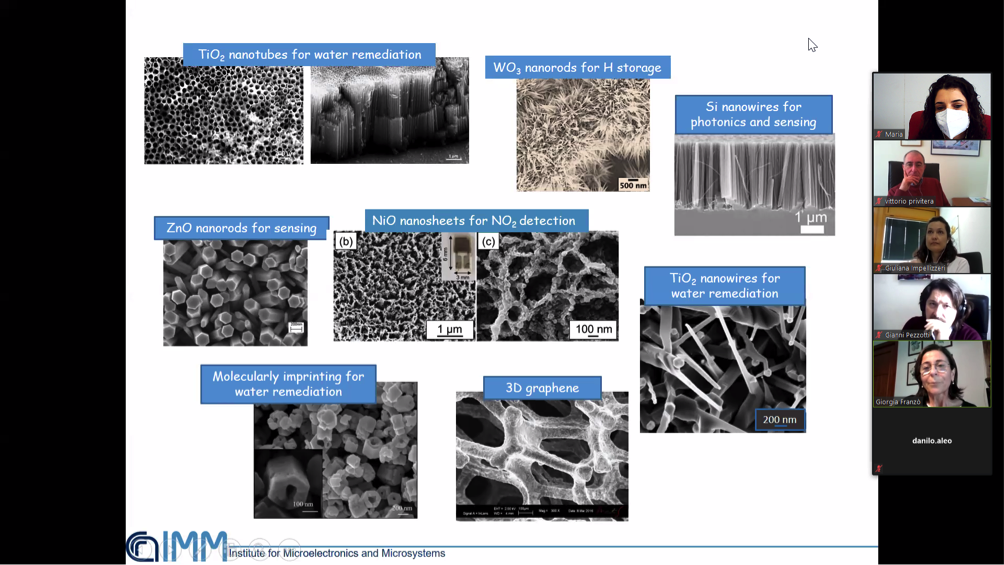The Steering Committee and the researchers of the institutes involved in ANTÌBIO took part in the kick-off meeting on March 14th, 2022.
Giuliana Impellizzeri, Senior Researcher at the Institute for Microelectronics and Microsystems (IMM) of the Italian National Research Council (CNR), and Principal Investigator (PI) of the ANTìBIO project chaired the kick-off meeting.
Giuliana Impellizzeri opened the kick-off meeting.
She welcomed the colleagues from the IMM-CNR (lead partner of the ANTÌBIO project), the staff of the Institute of Polymers, Composites and Biomaterials (IPCB) of the CNR (partner of the ANTÌBIO project), the researchers of the National Institute of Chemical Physics and Biophysics (NICPB) in Estonia (partner of the ANTÌBIO project). Greentech, a start-up that sustains enterprises in developing industrial-scale innovative solutions for wastewater treatment, and Medivis, a pharmaceutical company, that already demonstrated their interest in the project, participated to the meeting.
After the welcome speech, Vittorio Privitera (IMM-CNR), the Director of the IMM (one of the institute of the Department of Physical Sciences and Technologies of Matter of the CNR) presented the IMM as a virtuous example of research institute.
Then, Giorgia Franzò (IMM-CNR), the Deputy Director of the IMM Catania (University) Unit, introduced the Unit that is located at the Department of Physics and Astronomy of the University of Catania. The IMM group, in the last eight years, has gained an outstanding knowledge and international visibility in nanostructured photocatalysts for application in wastewater remediation.
Giuliana Impellizzeri described in details the ANTÌBIO project (panel “Capitale naturale e risorse per il futuro dell’Italia” nell’ambito delle “Linee Guida al Piano Triennale Attività CNR 2020-2022 – Progetti di Ricerca @CNR”). She discussed the motivations, the scientific strategy, the objectives, the team, the funding programme, the work plan together with the work packages (WPs). Giuliana Impellizzeri explained the major activities of WP1 (Management and Coordination) and WP5 (Dissemination and Exploitation), that are the WPs transversal to the whole action.
Maria Cantarella, researcher at IMM-CNR, gave an informative presentation concerning the scientific research developed at the IMM in the framework of ANTÌBIO. In particular, she discussed the molecular imprinting process and its potentiality in connection to the photocatalysis. The main scientific task of the IMM-CNR within the project is the design and synthesis of inorganic nanomaterials working under UV-light irradiation. She also presented some preliminary results about titanium dioxide nanopowders synthetized using thyme, following a green approach.
Giuseppe Nicotra, researcher at IMM-CNR, presented the BeyondNano infrastructure, showing the capabilities of the transmission electron microscopy and its role in the project. Indeed, accurate Transmission Electron Microscopy (TEM), Energy Dispersive X-ray Spectroscopy (EDS), and Electron Energy Loss Spectroscopy (EELS) analyses will be carried out at the BeyondNano research infrastructure on selected samples.
After a break of 30 minutes, Sabrina Carroccio (IPCB-CNR), coordinator of the IPCB unit, introduced the IPCB institute, one of the institute of the Chemical Sciences and Materials Technology of the CNR. The IPCB has a renowned international profile in all areas of polymer chemistry including synthesis, characterization, degradation, and molecule release studies. She descried in details the activities and the projects of the EnJoiPol (Environment Joins Polymers) group.
Roberta Puglisi (IPCB-CNR) presented the scientific activity of the group in relation to the ANTÌBIO project. The main task of the IPCB unit will be the design and synthesis of organic nanomaterials working under Vis-light irradiation. She also showed some preliminary results.
Anne Karhu (NICPB), coordinator of the Estonian team, gave an overview of the NICPB institute, which is among the first ones worldwide in nanoecosafety studies. She described to the audience the eco-safety tests using algae, daphnids, and bacteria Vibrio fischeri as sensitive models. These tests will be employed in the framework of the project so to ensure the aquatic material sustainability.
The last part of the meeting was dedicated to the upcoming deliverables and milestones. Giuliana Impellizzeri referred to the project GANTT chart showing, amongst others, the deliverables and milestones due in the first period. The meeting ended with final concluding remarks.

